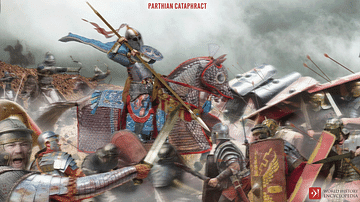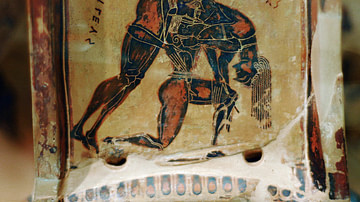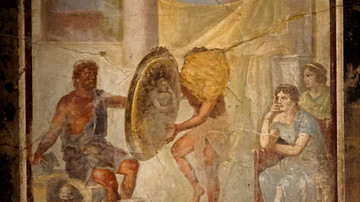Search
Remove Ads
Advertisement
Search Results

Article
Roman Armor & Weapons
From the days of the hoplites through the creation of the legionary until the fall of the Roman Empire in the west, the Roman army remained a feared opponent, and the Roman legionary's weapons and armor, albeit with minor modifications, remained...

Image Gallery
Evolution of Armor Throughout The Ages
This collection explores the evolution of arms and armour around the world, from ancient times to the early modern period. Although it is by no means a complete list of the varied gear carried into warfare throughout history, it takes a look...

Image
Assyrian Scale Armor
Assyrian soldiers wore copper alloy armor made in segments aligned like fish-scales. Hole allowed the scales to be laced together and a central ridge maintained their alignment. The armor only protected the back and chest, thus allowing free...

Definition
Ancient Persian Warfare
The ancient Persian military evolved from the earlier armed forces of the Medes which, in turn, developed from the warrior class of the indigenous people of the Iranian Plateau, the Aryan migrants (including the Persians) who later settled...

Definition
Parthian Warfare
Parthian warfare was characterized by the extensive use of cavalry and archers. Coming at enemy troops from all directions Parthian riders created confusion and wreaked havoc. They even developed the famous “Parthian shot.” Able to shoot...

Definition
Parthian Cataphract
The Parthian cataphract was a heavy cavalry unit of Parthian warfare, an entirely armored, huge fast horse mounted by a completely armored rider, equipped with a long lance and a long sword. Like a modern tank designed to smash through enemy...

Definition
Ajax (Play)
Ajax is a play written by the 5th-century BCE Greek poet and dramatist Sophocles. Although Sophocles wrote at least 120 plays, only seven have survived. Of his surviving plays, the best-known is Oedipus Rex (Oedipus the King) - part of a...

Image
Louis XIII in Armor
Louis XIII of France (r. 1610-1643) in armor, oil on canvas by Peter Paul Rubens, c. 1622-25.
Norton Simon Museum, Pasadena, California.

Image
Hephaestus Offers Thetis the Armor of Achilles
A Roman fresco depicting the forge-god Hephaestus presenting Thetis with the armour of her son Achilles, 1st century CE.
National Archaeological Museum of Naples.

Article
Psychological Intimidation at the Battle of Carrhae
Psychological intimidation in military conflict has been an art of war since ancient times. Employing misinformation, feigned movements, subtle messaging, and overt display of aggression, its employ is meant to unnerve the enemy before engagement...